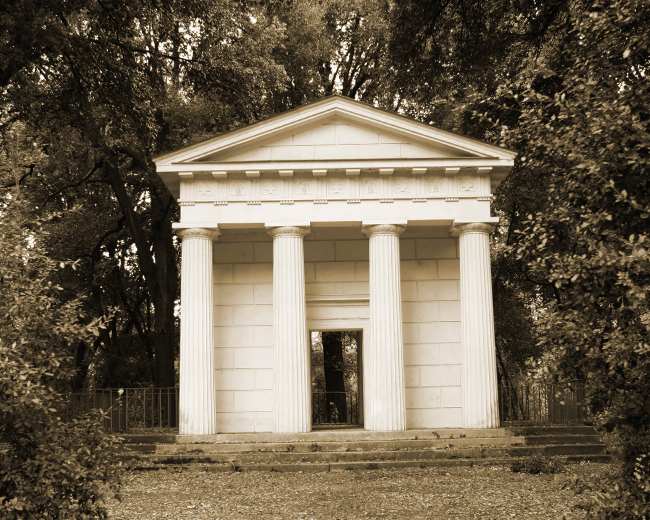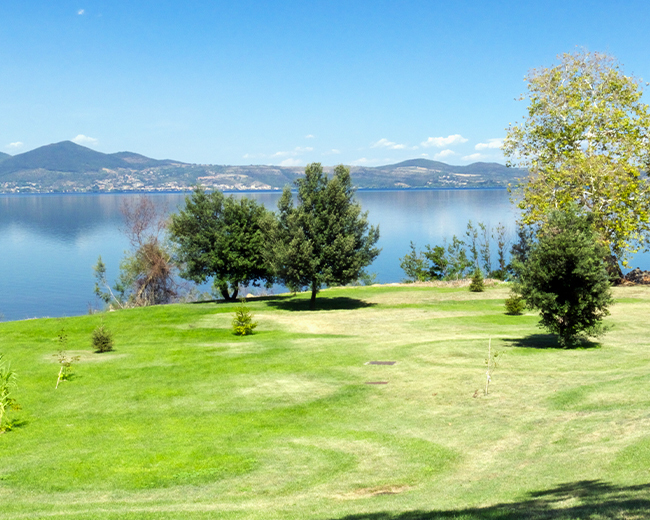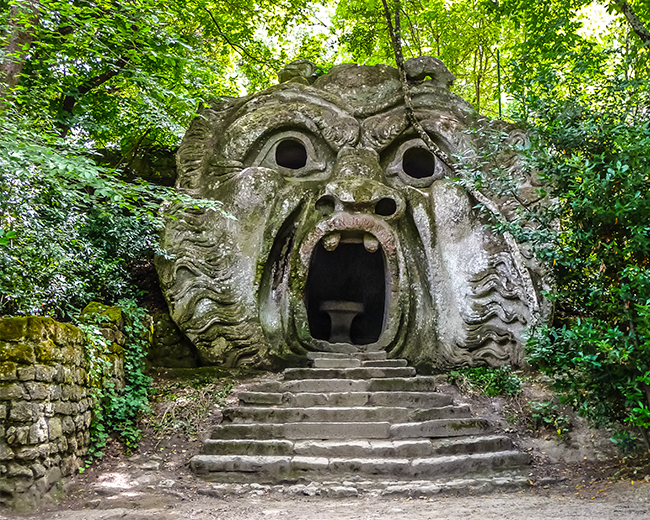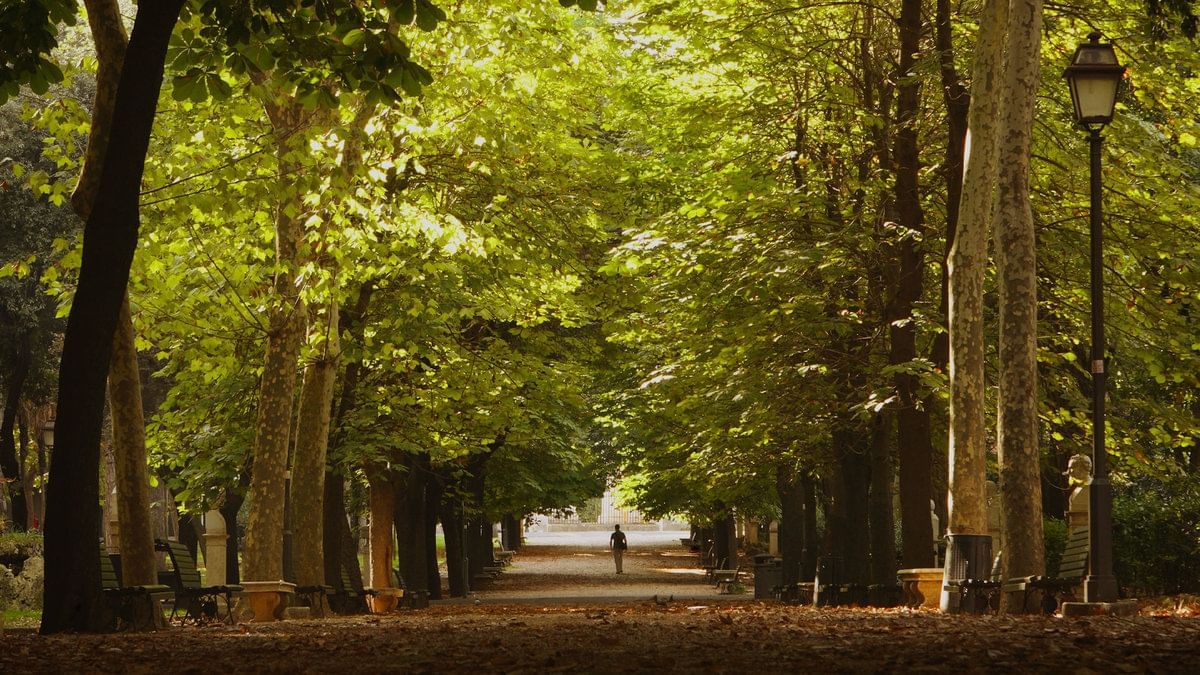Here’s a guide to the best parks in Rome to enjoy the show.
21 Oct 2020
Gruppo UNA
What’s leaf-peeping? Well, it’s a term that means going out to admire the autumn colours, a natural phenomenon that takes place every year in fall, when the leaves of the trees change colour and leap off into the void.
Not even the most ardent admirers of summer, people who hate the temperatures going down and increasingly shorter days, are immune to the charms of leaf-peeping, when nature is at one of its finest moments. From explosions of intense red on maples and wild cherry trees to brilliant shades of yellow, ochre and orange, mixed in with the browner tones of beeches and ancient oaks, trees create fabulous palettes of colour and light, transforming the woods into magical landscapes and city parks into places to rediscover.
Here’s a guide to the best parks in Rome to enjoy the show.
Villa Borghese - Piazzale Napoleon I.
Villa Borghese is not just one of Rome’s most beautiful parks, it is one of the largest urban parks in Europe. Take an afternoon to stroll through the avenues of this villa and admire the foliage that every autumn colours the park a blaze of hues. What sets the Villa Borghese gardens apart from other famous parks, such as Hyde Park or Central Park, is its perfect combination of nature and art, dotted with buildings, sculptures, monuments and fountains by famous architects and artists, as well as being blessed with many-century-old trees, small lakes, Italian gardens and large green spaces.
Villa Borghese’s highlights are the Lake Garden, where people rent boats and admire the Temple dedicated to Aesculapius in the middle of the lake; along the banks, the Sundial and the Fountain of the Family of Satyrs; the Secret Gardens (the Bird Garden, Old Garden, Sundial Garden and Cultivation Garden) reconstructed from historical and iconographic documentation; Piazza di Siena, named in honour of the city from which the Borghese family originated, which hosts the International Horse Riding Competition, events and concerts; the Casino Borghese del Vasanzio, home to the Borghese Gallery; and the Fortezzuola, which now houses the Museo Canonica. The park also finds space for the Etruscan Museum at Villa Giulia, the Gallery of Modern Art, and a Deer Park.

Appia Antica Regional Park - Via Appia Antica.
After its recent enlargement in October 2018, the Via Appia Antica Park now covers some 4,580 hectares and stretches for over 16 kilometres, in addition to the Caffarella valley (200 hectares), the Via Latina archaeological site, the Aqueducts archaeological site (240 hectares), the Tormarancia Estate (220 hectares), the Farnesiana Estate (180 hectares) and, to the south, Divino Amore, Falcognana and the Mugilla area.
The underlying morphology of the landscape around here was formed by the Latium Volcano some six hundred thousand years ago, when it created the flatlands on which the road was originally built. The Park’s vast number of different areas include important natural sites: the ancient Farnese Wood, for example, near the Via Ardeatina, is composed of downy oaks and cork trees, while sedge and large black poplar trees predominate around Tor Marancia. Come here and you’ll feel like you’re admiring the foliage from inside a Van Gogh painting!

Villa Ada - Via Salaria.
Dotted with numerous neoclassical and eclectic buildings such as the Temple of Flora, the Villa Polissena, the Royal Stables, the Swiss Chalet and the Gothic Tower, this large Rome park is characterized by holm-oak woods, cork oaks, pine forests and meadows. Extensive Villa Ada is characterized by lush vegetation and ongoing enhancement of its environmental heritage, which make it an ideal place for leaf-peeping.
In the late Nineties, a new gateway was built on Via Panama, offering access to a part of the park that has remained more untouched in terms of flora and fauna. Come here to walk through a wooded area characterized by extensive pine stands, holm oaks, laurels and chestnut trees, populated by squirrels, hedgehogs, wild rabbits and large communities of birds that have made this park their home.

San Liberato Park - Via Settevene Palo 33, Bracciano.
Forty kilometres from Rome on Lake Bracciano is a botanical park that is home to a forest of ancient chestnut trees, Canadian maples and Japanese cherry trees that every autumn turn yellow and orange. Fifty years of work and creativity have gone in to creating this park, which is less than an hour’s drive from Rome. Every step in this garden is like walking in some different part of the world, with one foot in Canada under the Canadian maple tree, and another in the land of the Rising Sun admiring a Japanese cherry tree. Particularly striking is how the plants have adapted not only to the climate but to unexpected local neighbours: the tall Liquidambar and the Parrotia persica, also known as the Iron Tree for the colour of its leaves in autumn, the Camphor Tree (Cinnamomum camphora) and the Nyssa sylvatica which catches fire this season.

Sacro Bosco di Bomarzo - Località Giardino, Bomarzo (VT).
We move slightly further from Rome, to Viterbo, to discover an unmissable park with beautiful foliage. Here you walk among oaks, holm oaks, elms, hornbeams, chestnuts and hazelnuts, admiring the colours of the fall foliage and discovering the very long history of the trees and plants that live here.
The Sacred Wood or Villa delle Meraviglie is also known as the Park of Monsters, because this natural park is decorated with a great many basalt sculptures that date back to the 16th century and depict mythological animals, gods and monsters. This garden was in fact a milestone in the history of art, the imaginative statues hidden in nature and accessible via a highly-evocative and esoteric walk.

Where to stay in Rome.
With autumn colours and sights framing your journey to discover the Eternal City, what better time could there be to come to Rome… Falling leaves, fresh and fragrant air and the landscape in all its splendour... The historic centre of Rome has the perfect hotel for your ambles through the city’s parks and woods and its surroundings: UNAHOTELS Decò Roma, a hotel that boasts an incredible location, a stone’s throw from Metro stops A and B, near Termini station and close to Rome’s main attractions. Evocative architectural design and art deco interior design conspire to ensure a truly Italian-style welcome.


